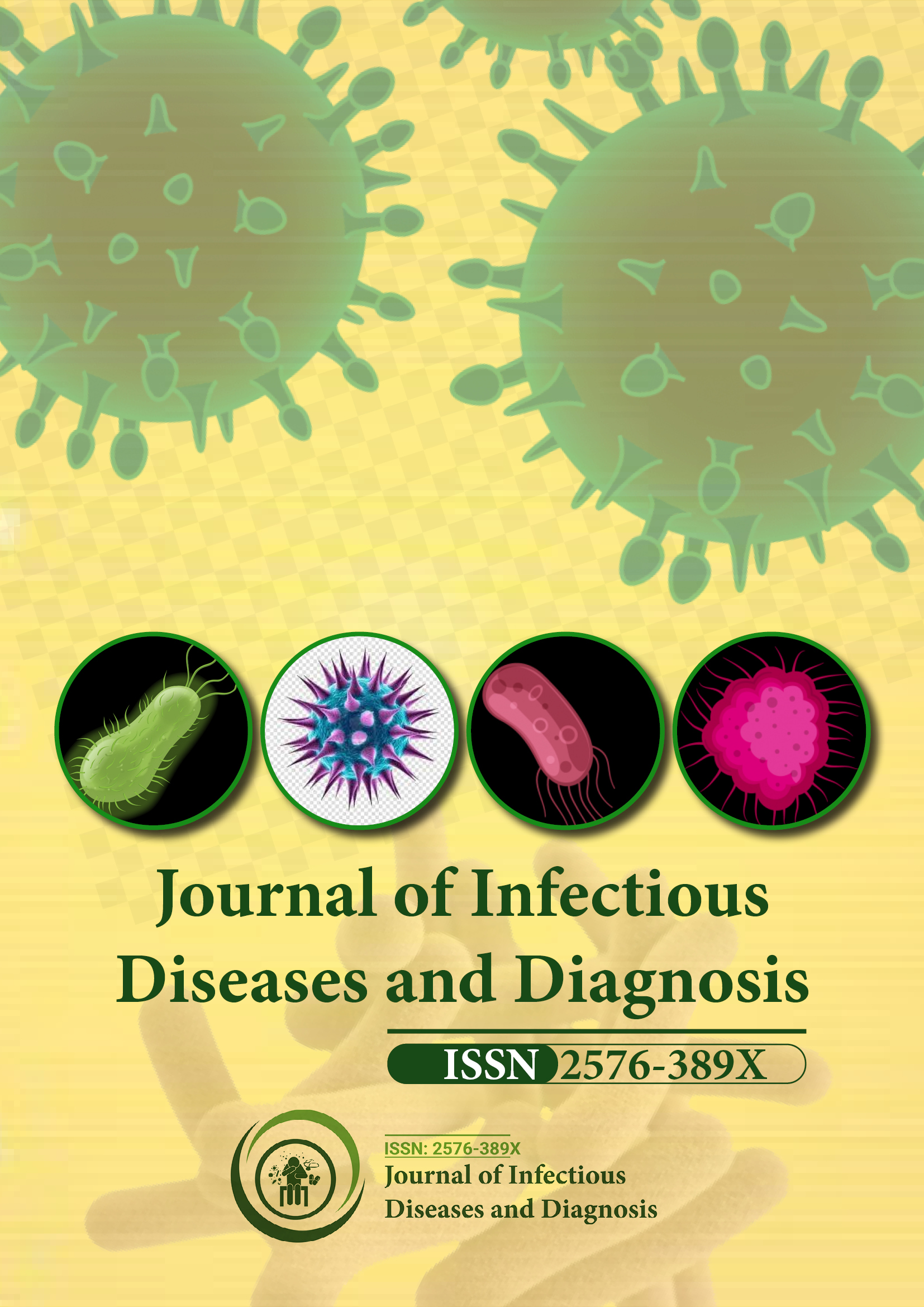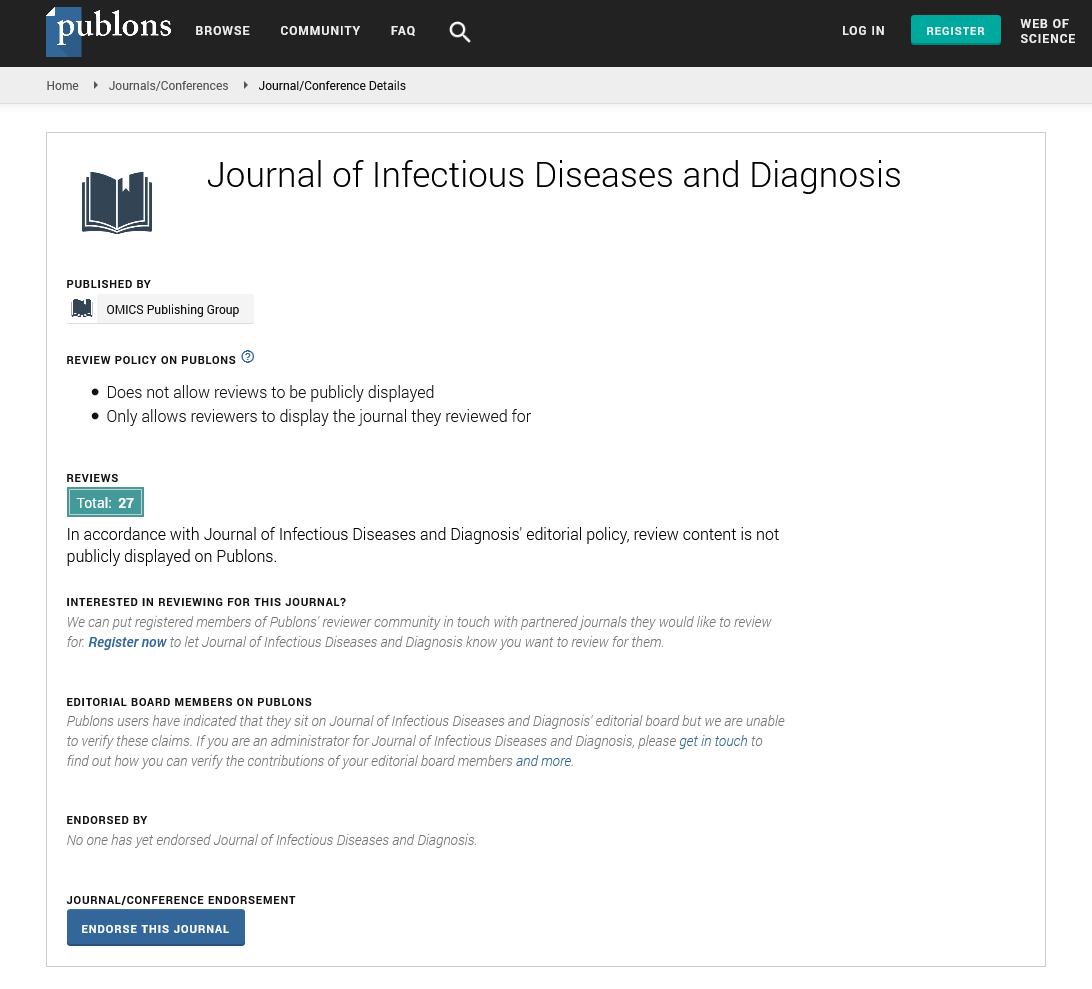Indexed In
- RefSeek
- Hamdard University
- EBSCO A-Z
- Publons
- Euro Pub
- Google Scholar
Useful Links
Share This Page
Journal Flyer

Open Access Journals
- Agri and Aquaculture
- Biochemistry
- Bioinformatics & Systems Biology
- Business & Management
- Chemistry
- Clinical Sciences
- Engineering
- Food & Nutrition
- General Science
- Genetics & Molecular Biology
- Immunology & Microbiology
- Medical Sciences
- Neuroscience & Psychology
- Nursing & Health Care
- Pharmaceutical Sciences
Study of HCV infection in Thalassemia patients receiving multiple blood transfusion in a tertiary care centre in rural India
2nd International Conference on Microbial Pathogenesis & Infectious Diseases
February 18-19, 2022 | Webinar
Shivani Singh
Burdwan Medical College and Hospital, India
Scientific Tracks Abstracts: Jour of Infec Dise & Diag
Abstract:
BACKGROUND: Blood transfusion is the mainstay of therapy of hemoglobinopathies and thalassemias. Its importance in maintaining a baseline haemoglobin level and suppressing the adverse effects of hypoxia were 1st recognised by Orcini in France and was later adopted worldwide, with a number of variations like hypertransfusion and supertransfusion to finally design a suitable regimen for the patients. Transfusion transmitted infections and hemosiderosis are the main complications of regular blood transfusion. Transfusion dependant patients are at risk of contracting various infections but HCV is a major concern, as 80% of HCV infected cases present with chronic liver disease, of which 20% develop liver cirrhosis.The prevalence of HCV in India reaches 21% and there are an estimated 65000- 67000 thalassemics in the country, with 9000- 10,000 cases being added per annum. Keeping these statistics in mind we undertook a study evaluating the epidemiology and outcome of HCV infection in transfusion dependant thalassemia patients in our centre. METHOD: In order to study the epidemiology of HCV infection in our community we undertook a study in the Thalassemia Control Unit of Burdwan Medical College and Hospital from July 2015 to June 2016 which included all old and new transfusion dependant patients enrolled in our centre. Patients were evaluated for the presence of and quantification of HCV infection using rapid immunochromatographic test,ELISA and RT-PCR and the results were tabulated. For studying the behaviour and outcome of the infection we employed RT-PCR, ferritin assay, platelet count, LFT and APRI. RESULT: A total of 45.4% cases were found reactive for HCV with no gender prediliction. Most of the cases were of β-thalassemia followed by HbE disease.The incidence of HCV showed a fluctuating trend over years.Most of the HCV reactive cases were aged between 0-5yrs followed by patients aged >55yrs. 34.2% patients had APRI score between 0.74-1.5 indicating moderate fibrosis and 23.5% had scores above 1.5 indicating extended fibrosis. High Ferritin level ( >1000ng)was present in 71.3% patients. Among these patients 31% had high APRI scores. The risk of fibrosis was found to be highest in children aged 5-10 yrs. The most common haplotype was CC followed by CT and TT respectively. CC was associated with highest rate of autoclearance(15/37) while CT was associated with highest rate of reinfection( 4/26). Genotype 3b was the most prevalent viral genotype. Majority of our cases had viral load between 1lakh and 5lakh . Very high viral loads of >8lakh which translates to poor IFN response was found in 1.3% of all cases. CONCLUSION: From our study we conclude that HCV is a major health problem in thalassemia patients in our centre. HCV has a high propensity of causing chronic liver disease and hence needs to be detected and treated early so as to maintain the quality of life of these patients. Hence steps should be taken to include surveillance for HCV as a regular practice in centres catering to such patients.
Biography :
Shivani Singh is a Pathologist based in Dhanbad, India. She has pursued her MD in pathology from Burdwan Medical College and hospital wherein she worked actively with thalassemia department to study the incidence and outcome of blood borne infections in transfusion dependant thalassemia patients. As a result of the findings of this study the major health hazard of increasing HCV infection in thalassemia patients came to light which caused the government to get actively involved in the prevention and control of this issue.

